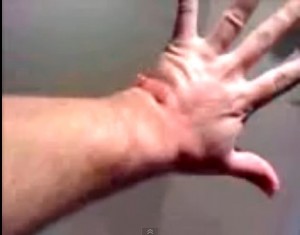Most of us are sensitive to poison plants such as poison ivy, poison oak, and poison sumac and develop itchy and blistering rash when contact is made with them. More than fifty percent of Americans are sensitive to such plants.
It is important to be aware of the presence of such plants while working or enjoying an outdoor activity.
Poison sumac is found in wet lands of southeast. They have smooth and oval shaped leaves and each stem grows around seven to thirteen such leaves.
The appearance of poison sumac plant varies from region to region and also in the different seasons. Even dead plants of this group can transmit toxic oil to the skin.
Symptoms of poison sumac rash
Some of the signs and symptoms of poison sumac rash are listed below:
- Any form of contact with poison sumac can result in the development of an itchy rash which appears within 24-72 hrs after the initial contact.
- Normally, poison sumac rash begins as small red bumps that develop into blisters of various sizes and shapes. Such blisters may also ooze fluids.
- The rash may occur in any part of body that comes into contact with oil from poison sumac plant. It can be of any shape or pattern, but more often they are straight lines or streaks over skin.
- There may an outbreak of poison sumac rash in different areas of the skin, at different times, which may create an impression that the poison sumac rash is spreading.
- Contrary to the accepted myth, the leakage of blister fluids does not cause spread of poison sumac rash. The spread of the rash takes place due to additional contact with the oil from the plant. Such contact may be through the oil which is often present on hands, clothes, tools or shoes.
In case of the following conditions, the affected individual may need to seek immediate medical attention:
- When significant discomfort is caused by poison sumac rash that covers a large area
- When the rash is infected
- When poison sumac rash occurs on the genitals, around the eyes or the mouth
- When the swelling is abnormal
- Severe reaction called anaphylaxis can occur in people who are extremely sensitive people to the poison sumac plant or other such plants.
- People with anaphylactic reaction have symptoms of swelling on face and throat and feel dizzy, fainting and/or may have breathing difficulties
Any of above shown symptoms needs immediate emergency medical care. The affected patients should not try self-driving. If no one is available to drive them, they should call 911 help line for emergency treatment.
The measures of self help treatment may be taken while waiting for ambulance.
Causes of poison sumac rash
The oil of the poison sumac plant called urushiol causes allergic skin reaction. The oil is present in all parts of the plants such as stems, leaves, roots and berries.
Individuals may come into contact with the oil from poison sumac in the following ways:
- By touching any part of plant
- Touching pets or animals that come in contact with the plant
- Contact of any objects with the poison sumac plants
- Exposure to smoke that results from burning of the plant
Tests and diagnosis for poison sumac rash
The doctor can diagnose poison sumac rash by its appearance and also by asking some questions about the medical history, the symptoms and about the reaction.
Under normal conditions, no lab test or X-ray is required.
Poison sumac rash treatment
Poison sumac rash and the subsequent reactions that occur due to contact with the plant normally need self care at home.
Some of the home remedies and self care methods are as follows:
- Anyone who happens to come in contact with the poison sumac plant or its oil should thoroughly wash the affected area with soap water as soon as possible.
- As an alternative, rubbing alcohol on the poison sumac rash can remove oils from skin and provide relief. Poison sumac rash does not occur if the oil is removed from the affected areas within 10 minutes from the initial contact.
Mild cases of poison sumac rash can get relief by the following methods:
- Cool compresses with water or milk
- Aveeno oatmeal bath-For relief from itching oatmeal can be mixed in bathing water
- Calamine- A non-prescription lotion
- Normally, corticosteroid creams do not help.
- Oral antihistamines like diphenhydramine can be used but one should avoid driving a car or operating machinery as such drugs cause drowsiness.
Medical treatment for poison sumac rash involves the following:
- The treatment for poison sumac rash depends on reaction severity, like reactions that cover large portion of body, uncomfortable and disturbing routine and rashes which continue for days together.
- Topical or oral corticosteroid drugs depending on severity of reaction reduce immune response and inflammation. Oral medications may continue for three days to four weeks, depending on the doctor’s diagnosis.
- Oral antihistamines can be used to control itching and allow persons to continue their routine
- Antibiotics may be required only in case of infection of the poison sumac rash
Poison sumac rash pictures


I got some reaction from poison sumac, and I tried a whole lot of “self-home remedies”, none of them seemed to work for me, I felt like I was going crazy with the itching and then the pain from itching. Until I talked to a guy that had had poison sumac about two months before I got it. Go to your local gas station, buy a gallon of gas, pour it onto a clean rag and rub it on the affected areas. Within seconds I was feeling relief. Of course it does sting or burn a little at first, but the relief i got after that was worth it.